The document discusses privacy-enhanced web search using a technique called MKSE in KNN. It proposes a framework called PP-PWS that uses vector quantization to segment and quantize datasets in order to generalize user profiles for each query while preserving privacy and security. This aims to improve over existing profile-based personalized search systems that do not support runtime profiling, have static security policies, and are vulnerable to successive and background attackers. The proposed approach is evaluated based on metrics like precision, recall, distortion and computational delay. It argues that PP-PWS enhances search quality while better protecting user privacy and security against different types of attacks.
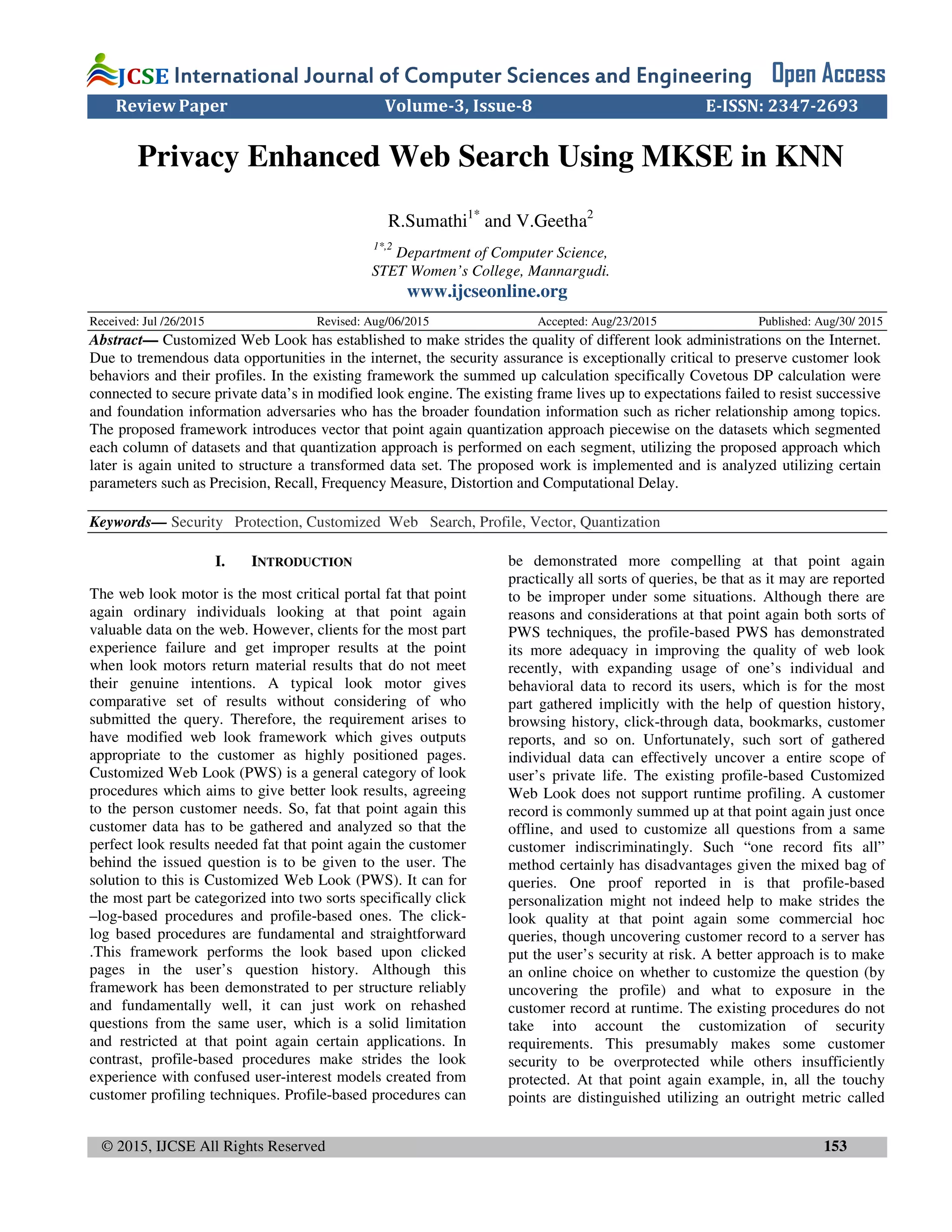
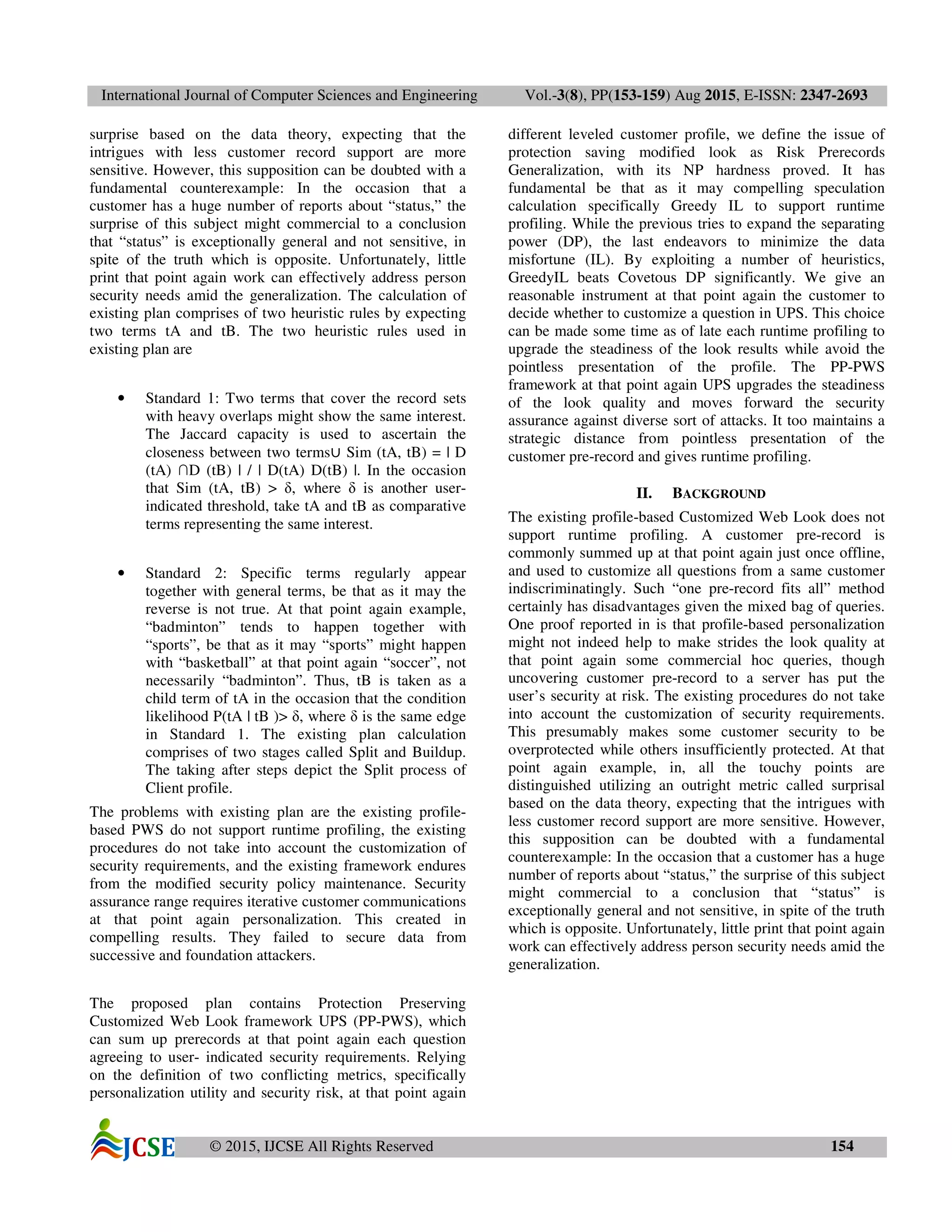
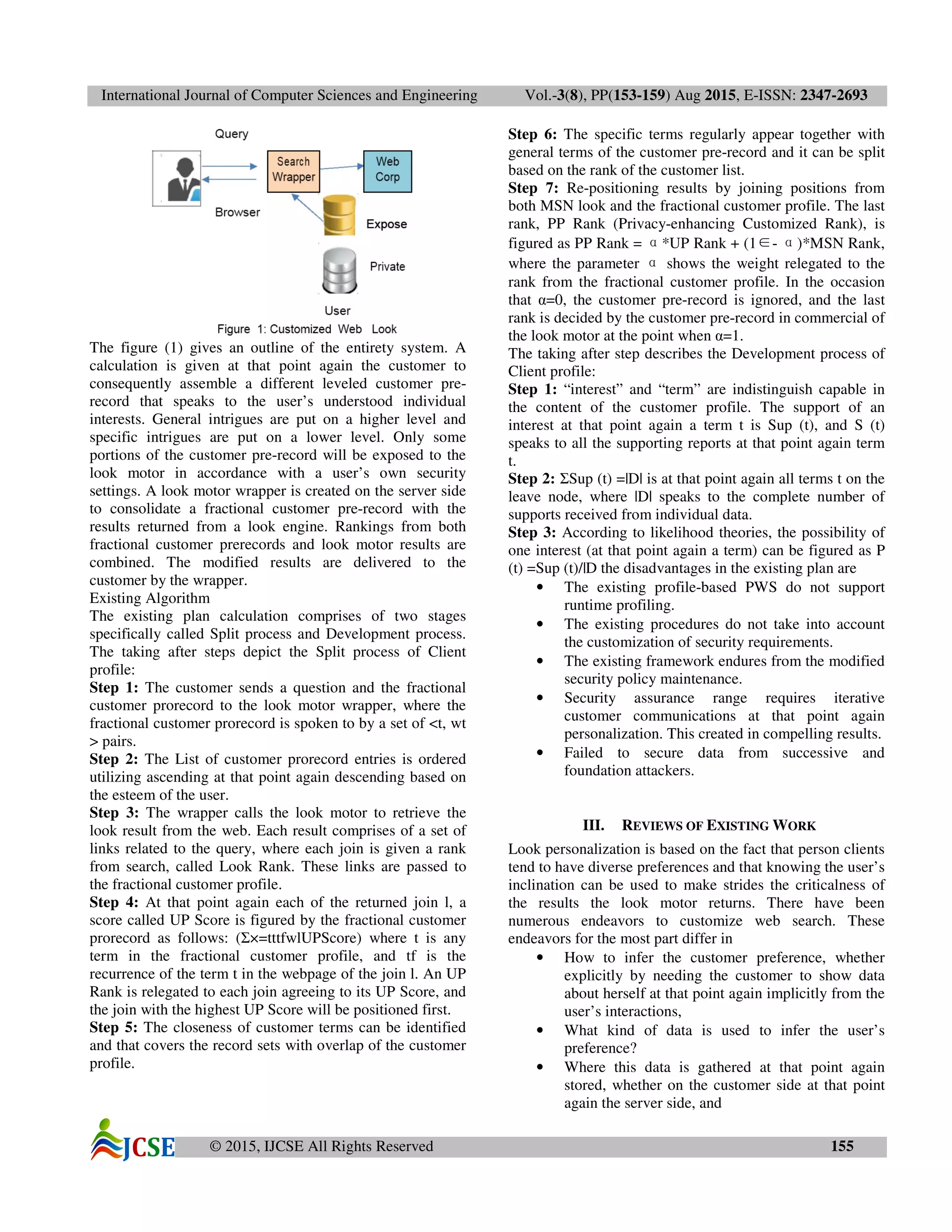
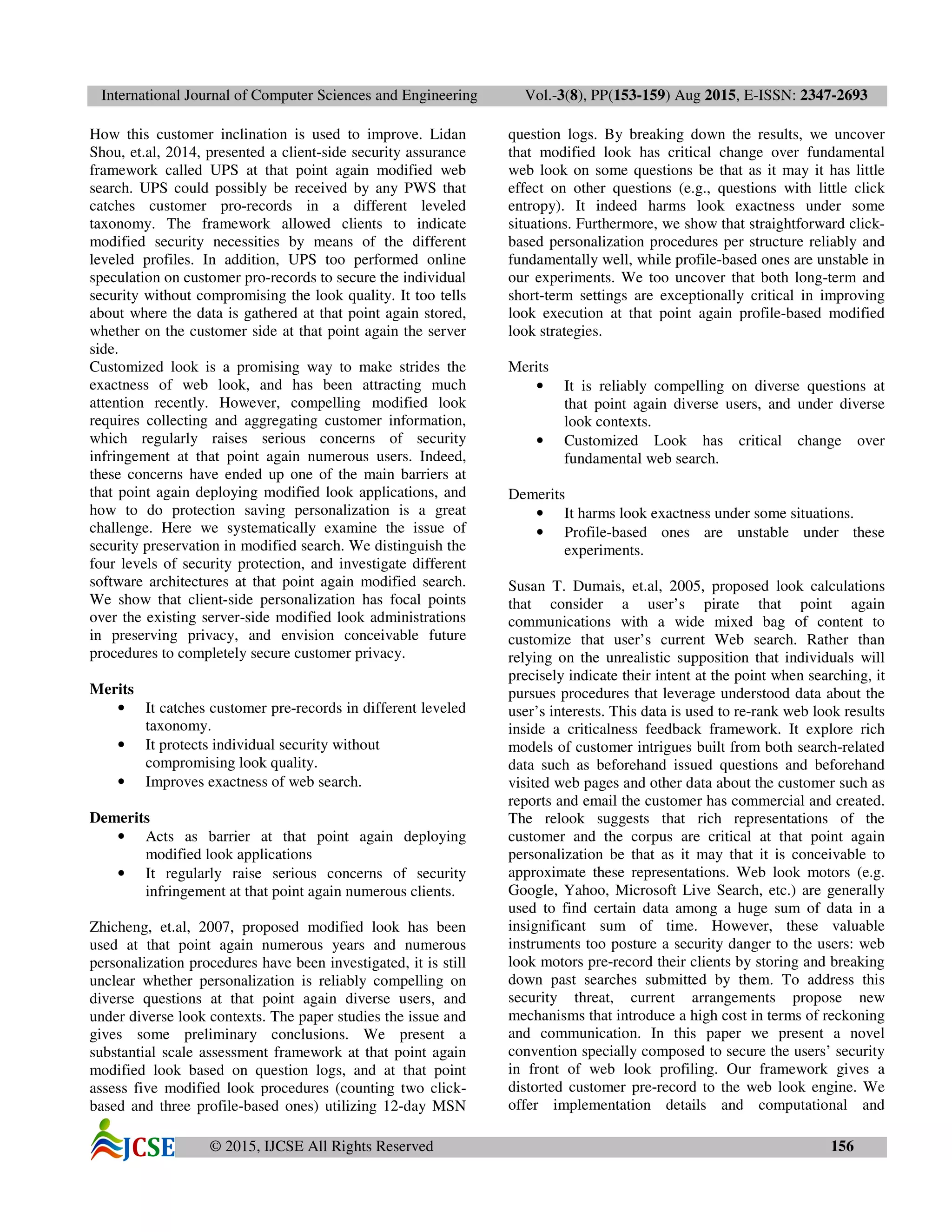
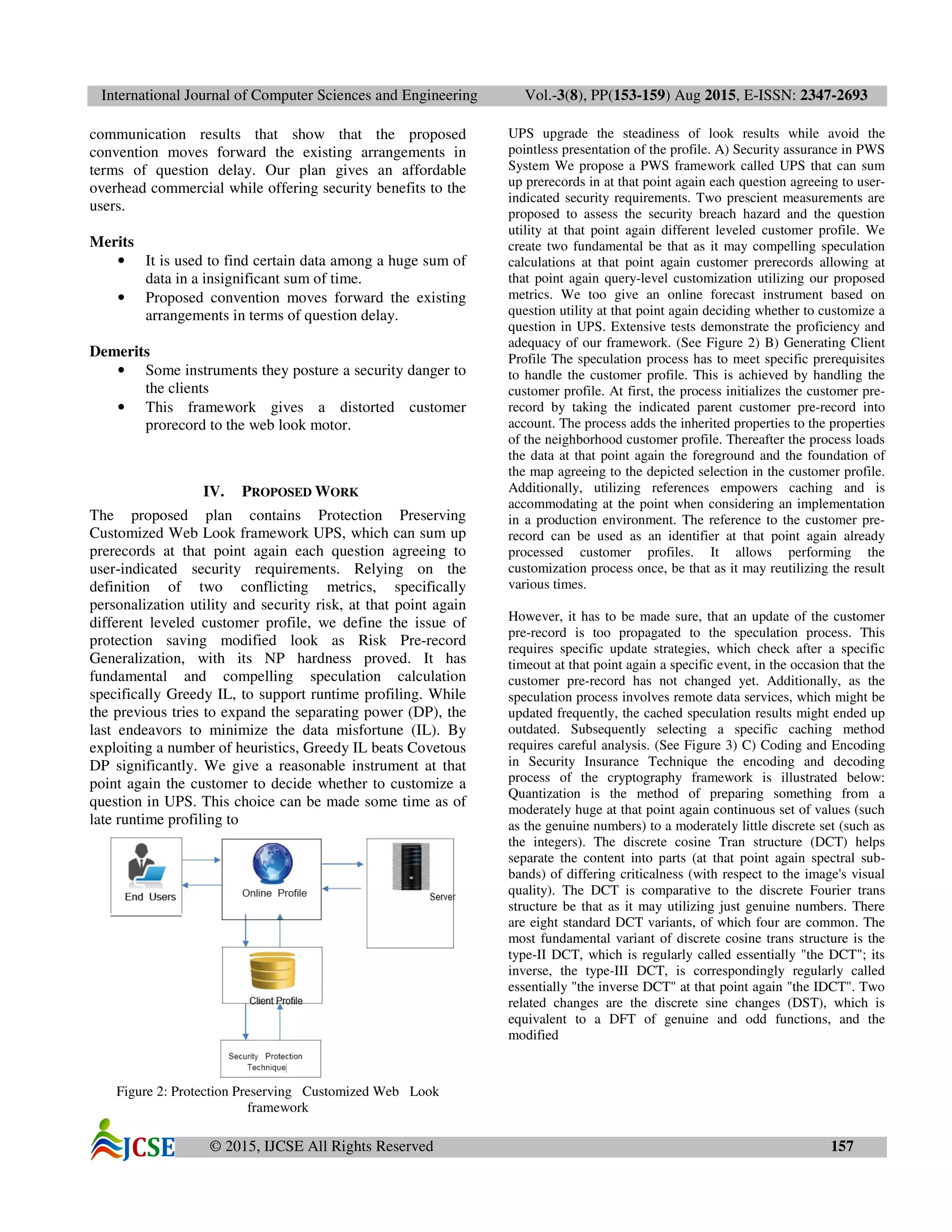
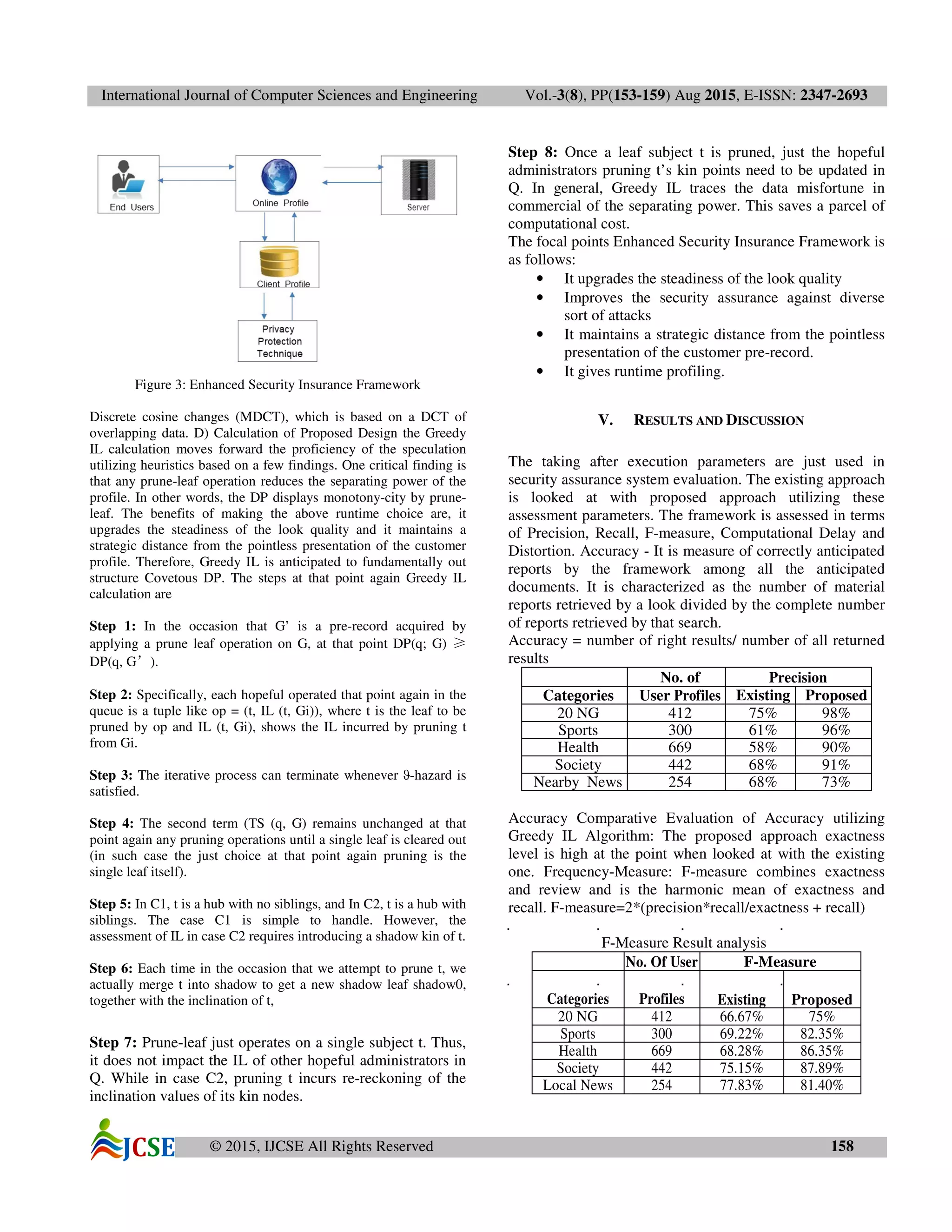
![International Journal of Computer Sciences and Engineering Vol.-3(8), PP(153-159) Aug 2015, E-ISSN: 2347-2693
© 2015, IJCSE All Rights Reserved 159
VI. CONCLUSION AND FUTURE WORK
The remarkable development of data on the Web has forced
new challenges at that point again the construction of
compelling look engines. The proposed work gives data on
customer customizable security preserving look framework-
UPS at that point again Customized Web Search. UPS
could possibly be received by any PWS that catches
customer records in a different leveled taxonomy. The
framework allowed clients to indicate modified security
necessities by means of the different leveled profiles.
Another critical conclusion we revealed in this proposed
work is that personalization does not work equally well
under different situations. The click entropy is used to
measure mixed bag in data needs of clients under a query.
Experimental results showed that modified Web look yields
critical improvements over generic Web look at that point
again questions with a high click entropy. At that point
again the questions with low click entropy, personalization
procedures performed similarly at that point again indeed
worse than generic search. As modified look commercial
diverse adequacy at that point again diverse kinds of
queries, we argued that questions should not be handled in
the same way with regard to personalization. The proposed
click entropy can be used as a fundamental measurement on
whether a question should be personalized. At that point
again future work, we try to resist adversaries with request
foundation information counting exclusiveness, sequentially
and so on at that point again the capacity to catch a
arrangement of questions from the victim.
ACKNOWLEDGEMENT
1
R.SUMATHI, M.Phil Research Scholar, PG and Research
Department of Computer Science, STET Women’s College,
Mannargudi.
2
Mrs. V. GEETHA M.Sc., M.Phil., B.Ed., Head, PG and
Research Department of Computer Science, STET
Women’s College, Mannargudi.
REFERENCES
[1] I. F. Akyildiz, X. Wang, and W. Wang, “Wireless Mesh
Networks: A Survey”, Computer Networks and ISDN
Systems, Vol.47, Issue-2, 2005, pp.445-487.
[2] I. F. Akyildiz, and X. Wang, “A Survey on Wireless Mesh
Networks”, IEEE Radio Communications, Vol.43, Issue-3,
2005, pp.23-30.
[3] M. Lee et al., “Emerging Standards for Wireless Mesh
Technology”, IEEE Wireless Communications, Vol.13,
Issue-4, 2006, pp.56-63.
[4] N.B. Salem, and J-P Hubaux, “Securing Wireless Mesh
Networks”, IEEE Wireless Communications, Vol.13, Issue-
2, 2006, pp.50-55.
[5] S. Han, E. Chang, L. Gao, T. Dillon, T., Taxonomy of
Attacks on Wireless Sensor Networks, in the Proceedings of
the 1st European Conference on Computer Network
Defence (EC2ND), University of Glamorgan, UK, Springer
Press, SpringerLink Date: December 2007.
[6] C. Karlof and D. Wagner, “Secure routing in wireless sensor
networks: attacks and countermeasures,” Ad Hoc Networks
1, 2003, pp. 293-315.
[7] Y. Yang, Y. Gu, X. Tan and L. Ma, “A New Wireless Mesh
Networks Authentication Scheme Based on Threshold
Method,” 9th
International Conference for Young Computer
Scientists (ICYCS-2008), 2008, pp. 2260-2265
[8] He Bai ; Ke Chen ; Gang Chen,” Supporting Privacy
Protection in Personalized Web Search” Published
in:Knowledge and Data Engineering, IEEE Transactions on
(Volume:26 , Issue: 2 )Page(s):453 – 467, 2013
[9] Wanying Ding ; Mengwen Liu ; Xiaoli Song more authors,”
Scalable user intent mining using a multimodal Restricted
Boltzmann Machine”. Published in:Computing, Networking
and Communications (ICNC), 2015 International
Conference of Date of Conference 16-19 Feb. 2015
Page(s):618 – 624.
[10] Lina Zhou ; Dongsong Zhang,” An integrated method for
hierarchy construction of domain-specific terms” Published
in:Computer and Information Science (ICIS), 2014
IEEE/ACIS 13th International Conference onDate of
Conference:4-6 June 2014 Page(s):485 – 490
[11] Shekhar, S. ; Jalal, A.S.,” Semantic Based Image Retrieval
using multi-agent model by searching and filtering
replicated web images”. Published in:Information and
Communication Technologies (WICT), 2012 World
Congress ofDate of f Conference:Oct. 30 2012-Nov. 2 2012
Page(s):817 - 821](https://image.slidesharecdn.com/29-ijcse-01238-7sumathi-151009122336-lva1-app6891/75/29-ijcse-01238-7-sumathi-7-2048.jpg)